
Dr. Caleb Huff
Dr. Caleb Huff
Dr. Caleb Huff, Endometriosis Specialist
Summary: Dr. Caleb Huff is a dedicated endometriosis specialist based in Huntington, West Virginia, USA. His care philosophy recognizes that while retrograde menstruation may contribute to endometriosis, it does not explain all cases. Dr. Huff considers a combination of factors—including vascular and lymphatic spread, coelomic metaplasia, and embryonal rest theories—to understand and address rarer manifestations of the disease.
Dr. Huff performs excision surgery, the gold standard for removing endometriosis lesions, and provides individualized care plans that balance surgical and medical management. He emphasizes that hormone therapies and medications are primarily palliative and tailors their use to reduce recurrence, manage coexisting conditions, or control residual disease.
Pain management is a key focus, using a multimodal, non-opioid-first approach and collaborating with other specialists when needed. Medications such as OCPs, progestin-only options, IUDs, NSAIDs, and, if necessary, GnRH agonists/antagonists are used strategically to control symptoms.
Dr. Huff provides evidence-based, compassionate care designed to help patients regain control over their health and quality of life.
City: Huntington, West Virginia, USA
Philosophy of Endometriosis Care: I think that most endometriosis results from retrograde menstruation, but this does not explain all of it. There must be a combination of causes to explain it all. Vascular and lymphatic spread, as well as coelomic metaplasia and embryonal rest theories, can help to explain some of the rarer locations.
What type of surgery do you perform for endometriosis: Excision
Medication: OCPs—both standard use and continuous use, progestin-only pills, Nexplanon, and Mirena IUD, all to help minimize symptoms. NSAIDs during painful days to reduce inflammation and menstrual bleeding. If these methods fail, or if the patient has pain after surgery, I will advance to the GnRH agonists/antagonists such as Lupron, Orilissa, and Myfembree.
Approach to Persistent Pain After Surgery: In these cases, I use the above-mentioned medications in different combinations to minimize pain. I also seek other specialties for possible cross-specialty causes, such as GI, urology, pelvic floor PT, counseling, exercise, and nutrition specialists.

Dr. Mallory Stuparich
Dr. Mallory Stuparich
Dr Mallory Stuparich – Endometriosis Specialist
Summary: Dr Mallory Stuparich is a leading endometriosis specialist based in Los Alamitos, California, USA. Her care philosophy is grounded in multiple scientific theories, including neuroimmunological origins, coelomic metaplasia, hematogenous and lymphatic spread, and genetic predisposition. While retrograde menstruation may play a role, Dr Mallory Stuparich emphasizes that the theory of retrograde menstruation clearly has limitations, and Dr Mallory Stuparich emphasizes that it does not fully explain cases in premenarchal girls, cisgender men, or post-hysterectomy patients.
Dr Mallory Stuparich performs excision surgery, the gold standard for removing endometriosis lesions. She provides honest, thorough discussions about treatment options, especially the limitations of hormone therapy and medications like birth control and GnRH agonists/antagonists. These therapies are palliative and symptom-focused, not curative, and often come with side effects that limit long-term use.
Post-surgery, Dr Mallory Stuparich discusses hormone therapy in three key scenarios: reducing the recurrence of endometriomas, managing symptoms from coexisting adenomyosis, or supporting patients seeking additional symptomatic management of presumed occult disease. Each treatment plan is customized based on the patient’s needs and goals.
Dr Stuparich also prioritizes comprehensive pain management using a multimodal, non-opioid-first approach. She utilizes NSAIDs, acetaminophen, gabapentin, SNRIs, muscle relaxants, and suzetrigine, prescribing opioids only for short-term postoperative relief.
Persistent pain is addressed proactively. Starting at the first consultation, Dr Mallory Stuparich evaluates all pain sources, not just endometriosis. She creates individualized plans and revisits them if symptoms persist beyond six months post-surgery, coordinating care with other specialists when needed.
Trained at the University of Texas Southwestern Medical Center, Dr Mallory Stuparich offers compassionate, evidence-based endometriosis care, helping patients regain control over their health and quality of life.
What type of surgery do you perform for endometriosis: Excision
Medication: Medications for endometriosis (e.g., hormone therapy like birth control as well as GnRH agonists/antagonists) are palliative, meaning that they are aimed at symptom management. There is no guarantee that medications will directly affect the disease itself. It is crucial to discuss this very significant limitation in a fully informed consent discussion with each patient. Additionally, for GnRH agonists and antagonists, their side effect profile and regulatory guidelines associated with the medications preclude their use for extended periods of time, so in many cases, risks quickly outweigh benefits for the patients. Postoperatively, I discuss the role of hormone therapy in three circumstances:
1. Patients who have endometriomas may benefit from ovulation suppression through the use of hormone therapy in an effort to reduce the formation of future endometriomas
2. Patients who still have a uterus affected by adenomyosis may experience symptomatic improvement
3. Patients who have undergone excision, understanding that no surgeon can guarantee a complete excision, and want to exhaust every resource in symptomatically managing any presumed occult disease. The decision to use hormone therapy postoperatively is always an individual decision, and I assist in guiding my patients to the best decision for them.
Pain management, and especially pain management after surgery, is critical. I prioritize the use of non-opioid pain medications and approach pain management in a multi-modal fashion. Medications that I have used for pain management for patients include, but are not limited to, NSAIDs, acetaminophen, gabapentin, SNRIs, muscle relaxants, and Journavx (suzetrigine, a sodium channel blocker). I prescribe opioids for postoperative pain management. I do not prescribe long-term opioids in my practice.
Approach to Persistent Pain After Surgery: My approach starts at the initial consultation, where I take a detailed history and physical examination, perform the in-office ultrasound, and provide the patient with a comprehensive assessment of all of their pain generators (not just endometriosis). The patient and I decide on a plan for each pain generator, which the patient mainly executes, and I am available to provide any assistance or support that is within my scope. This anticipatory approach drastically reduces the occurrence of persistent symptoms in many cases. If a patient has persistent symptoms, then usually these symptoms are still present at 6 months after surgery, which tends to be the earliest point at which patients will know what their new “normal” is postoperatively. If this is the case, then I will revisit the specific issues and concerns they have, as well as investigate how well the initial plan we put in place was executed. This is also a time to gather a symptom inventory from the patient and determine if additional specialists need to be involved in the patient’s care for a work-up of a specific symptom or set of symptoms.

Dr. Juan Camilo Muñoz Escandon
Dr. Juan Camilo Muñoz Escando
Dr Juan Camilo Muñoz Escando – Endometriosis Specialist
Summary: Dr Juan Camilo Muñoz is a leading endometriosis specialist based in Bogotá, Cundinamarca, Colombia. With a focus on excision surgery, Dr Juan Camilo Muñoz provides compassionate, evidence-based care rooted in Sampson’s theory of endometriosis. He combines medical expertise with a patient-first philosophy, helping individuals manage this complex condition through tailored treatment plans and long-term support.
In his clinical practice, Dr Juan Camilo Muñoz often uses hormonal therapy, as well as supportive treatments like antioxidants (vitamins C and E) and probiotics, to address symptoms. Recognizing that persistent pain can be deeply challenging, he takes a multidisciplinary approach, collaborating with gastroenterologists, pelvic floor therapists, pain clinics, psychologists, and nutritionists to ensure holistic care. Patients trust Dr Juan Camilo Muñoz for his dedication, surgical precision, and commitment to improving the quality of life for those living with endometriosis. City: Bogotá, Cundinamarca, Colombia
Philosophy of Endometriosis Care: Sampson’s theory
What type of surgery do you perform for endometriosis: Excision
Medication: The pharmacological treatment for endometriosis that I usually use in the clinic is hormonal treatment. In our environment, there is difficulty in having GNRH agonists or antagonists or other medications to control symptoms. Another type of treatment that uses clinical practice is the use of antioxidants such as vitamin C and vitamin E. Also, the use of probiotics given some of the theories of endometriosis’ gastrointestinal origin.
Approach to Persistent Pain After Surgery: Pain treatment in patients with endometriosis is often complex. Given the complexity of pain treatment, I always perform multidisciplinary management of my patients with services attached to gynecology. Services such as gastroenterology, physiotherapy to start treatment or pelvic floor therapy, pain clinic, psychology, psychiatry, nutrition, among others, are services that help me improve pain in these patients

Dr. Edgar Omar Ruiz Treviño
Dr. Edgar Omar Ruiz Treviño
Dr Edgar Ruiz Treviño – Endometriosis Specialist
Summary: Dr Edgar Ruiz Treviño is an experienced endometriosis specialist based in León de los Aldama, Guanajuato, Mexico. Known for his compassionate and comprehensive approach, Dr Edgar Ruiz Treviño views endometriosis as a systemic, inflammatory, and progressive disease that requires both surgical precision and multidisciplinary care. He specializes in excision surgery, offering patients relief through expert intervention and personalized treatment plans.
In addition to surgery, Dr Edgar Ruiz Treviño incorporates medical therapies such as anti-inflammatories and progestins and collaborates with nutritionists and mental health professionals to support whole-person healing. For patients experiencing persistent pain after surgery, he emphasizes ongoing care through rehabilitation services and coordination with pain clinics. Patients value his dedication, deep understanding of endometriosis, and commitment to improving their quality of life through every stage of treatment.
City: León de los Aldama, Guanajuato, Mexico
Philosophy of Endometriosis Care: It is a systemic, inflammatory, benign, progressive disease that requires a comprehensive and multidisciplinary approach.
What type of surgery do you perform for endometriosis: Excision
Medication: Anti-inflammatories, progestins, and assessment by a nutritional and psychological team.
Approach to Persistent Pain After Surgery: Management with anti-inflammatories, progestins, rehabilitation assessment, and pain clinic
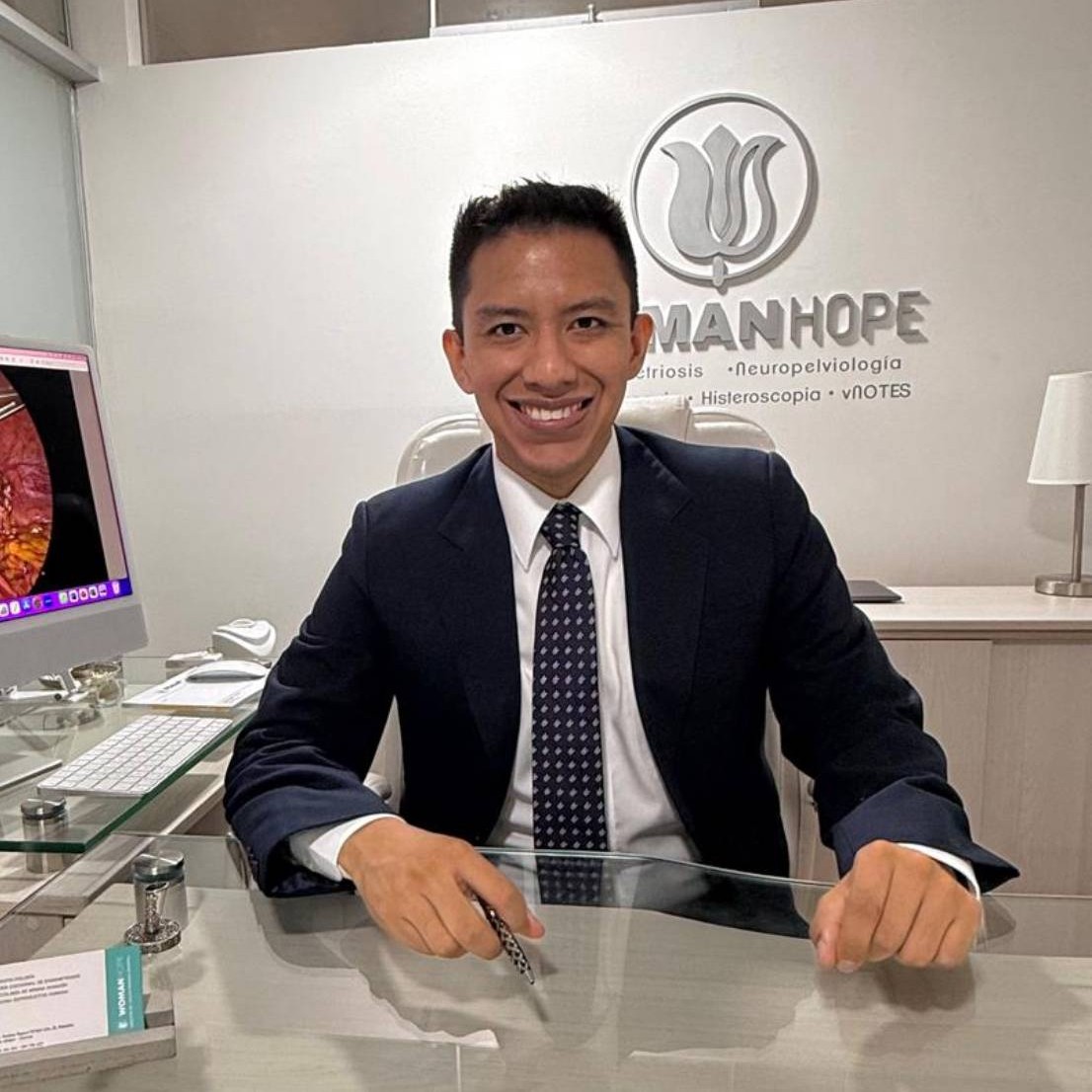
Dr. Carlos Enrique Parraga Sandoval
Dr. Carlos Enrique Parraga Sandoval, Endometriosis Specialist
City: Lima, Lima, Peru
Philosophy of Endometriosis Care: Consider that genetic and epigenetic theory play a crucial role in the pathophysiology of the disease. – Over time, endometriosis has had a wide variety of options as part of its development. However, the lack of a concise and clear definition makes each patient’s management and future treatment completely different. -For example, it is crucial to consider the onset of endometriosis with extensive organic involvement versus endometriosis with isolated nerve involvement. – This makes part of my management personalized. Most of my patients who come for a new medical opinion or surgery have highly relevant medical histories: previous surgeries, family history of endometriosis, and persistent pain.
What type of surgery do you perform for endometriosis: Excision
Medication: The vast majority of my patients receive a combination treatment, which includes hormone suppression therapy, an anti-inflammatory diet, and vitamin supplements. -In some cases, we resort to excisional surgery for endometriosis. Afterward, we continue the treatment, which is discontinued when the patient desires pregnancy or is in menopause. -I also incorporate pain relief, especially for patients with injuries to the pudendal nerve or peripheral branches of the ilioinguinal or iliohypogastric nerve. -I generally recommend treatment independently of surgery. If surgery is required, we continue treatment afterward and evaluate pain improvement over the months.
Approach to Persistent Pain After Surgery: A large number of patients who come for a second opinion because they persist in pain despite undergoing surgery. It is important to mention that patients need:
1) A new evaluation of the type of pain they have and a determination of whether it is due to endometriosis or another pelvic cause. Previous studies and treatments must also be evaluated.
2) A neuropelviological perspective must be considered, not only to view pain as a disease but also as information, and to evaluate the pain pathway, given that a large number of patients have nerve involvement.
3) A coadjuvant treatment must be considered for pain management: pelvic physical therapy, pain therapy, among others.
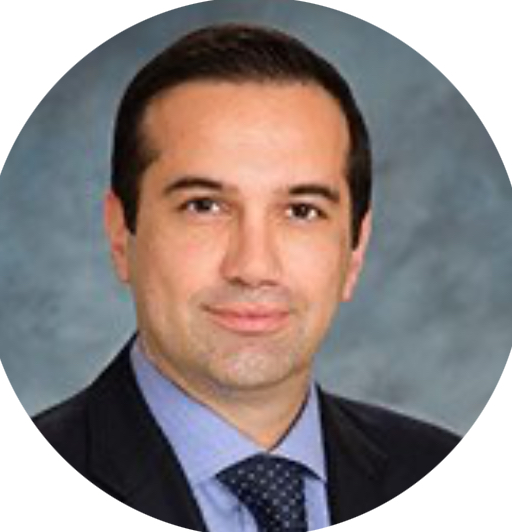
Dr. Reza Askari
Dr. Reza Askari, Endometriosis Specialist
City: Los Angeles, California, USA
Philosophy of Endometriosis Care: Current scientific evidence most strongly supports the coelomic metaplasia theory as the primary explanation for the development of endometriosis.
Our knowledge of endometriosis is growing every day, and I believe epigenetics and immune system factors will become key areas of focus moving forward.
What type of surgery do you perform for endometriosis: Excision
Medication: Effective care for endometriosis requires a comprehensive view of each patient’s health, recognizing that other conditions may contribute to symptoms. While there is no medical therapy that cures endometriosis, complete surgical excision remains the foundation of treatment. After surgery, when necessary, I often recommend hormonal therapy—typically progestins, either orally or through an intrauterine device (IUD)—to help manage bleeding or adenomyosis-related symptoms when present. I generally avoid GnRH agonists and antagonists, as their risk profiles and clinical outcomes do not, in my experience, offer meaningful advantages over progestin-based
Approach to Persistent Pain After Surgery: My goal is always to walk alongside patients through their recovery, not just for the surgery itself, but until they truly feel better
I believe that recovery does not end in the operating room. I stay closely involved with every patient’s care, providing follow-up and support for as long as needed to help them achieve meaningful, lasting improvement.
Every patient leaves surgery with a personalized recovery plan, shaped by their history, examination, and lab findings, with particular attention to any additional pain contributors. I routinely recommend pelvic physical therapy and collaborate with a trusted network of physiatrists to ensure each patient receives truly comprehensive care throughout their healing journey.

Dr. Fernando Garcia Vargas
Dr. Fernando Garcia Vargas
Dr Fernando Garcia Mexico – Endometriosis Specialist
Summary: Dr Fernando Garcia Mexico is a highly experienced endometriosis specialist based in Puebla, Mexico. With a deep commitment to personalized care, Dr Fernando Garcia approaches endometriosis as a multifaceted disease influenced by factors such as retrograde menstruation, coelomic metaplasia, and immune dysfunction. His practice focuses on accurate diagnosis and individualized treatment plans, often involving expert excision surgery and multidisciplinary collaboration for complex cases, including those affecting the bladder, rectum, or ureters.
Patients seeking compassionate and advanced care choose Dr Fernando Garcia Mexico for his integrative approach. He frequently partners with specialists in urology and coloproctology to ensure comprehensive outcomes, especially in deep infiltrative endometriosis. After surgery, he recommends synthetic progestins to reduce recurrence and refers patients with persistent pain to a neuropelveologist for thorough evaluation. Dr Fernando Garcia’s holistic, evidence-based care provides women with lasting relief and restored quality of life.
City: Puebla, Puebla, Mexico
Philosophy of Endometriosis Care: I believe that the theory of celomic metaplasia, as well as retrograde menstruation and altered immunity, can contribute to the development of the disease and its progression through different pathways. Therefore, it is essential to take a multidisciplinary assessment approach, individualizing each case to offer excision surgery when necessary, as cases of deep infiltrative endometriosis can occur, which may involve the rectum, ureters, bladder, etc. In such cases, joint management with coloproctology and urology is required to perform a successful surgery.
What type of surgery do you perform for endometriosis: Excision
Medication: Synthetic progestins such as desogestrel, implant, injections, or levonorgestrel-releasing intrauterine systems, which may help reduce the recurrence of the disease after excision surgery, and the time you use it depends on the option you decide
Approach to Persistent Pain After Surgery: I always recommend a complementary treatment such as synthetic progestins after excision surgery, and in case of symptom persistence, I refer my patients for evaluation by a neuropelvicologist.
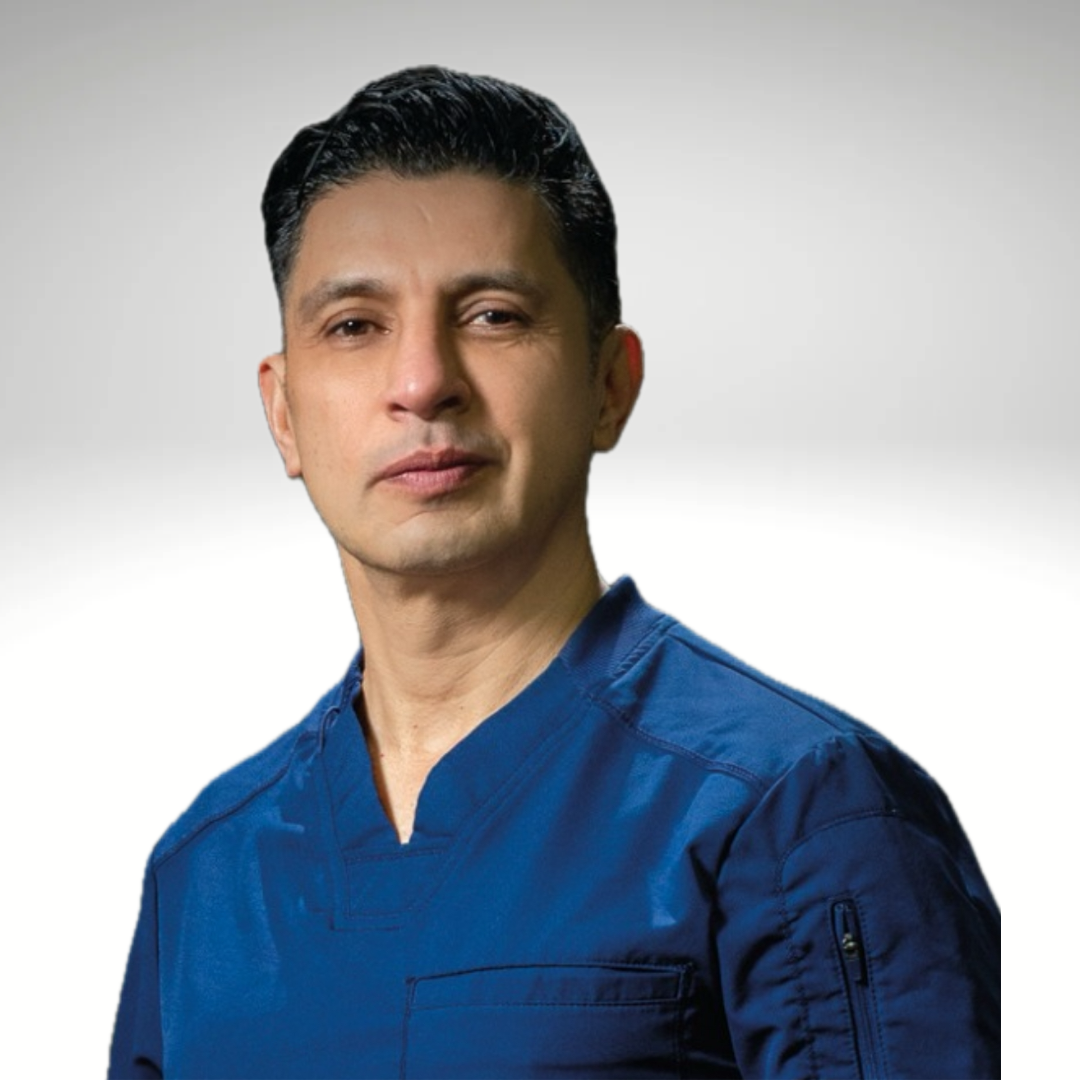
Dr. Victor J. Carrasco Urrutia
Dr. Victor J. Carrasco Urrutia
Dr Victor Carrasco Urrutia – Endometriosis Specialist
Summary: Dr Victor Carrasco Urrutia, a leading endometriosis specialist in Juárez, Mexico, offers a unique, science-driven approach to treating this complex disease. With deep expertise in molecular biology, Dr Carrasco Urrutia views endometriosis as a condition rooted in genetic and epigenetic changes, including microRNA dysregulation and iron-induced cellular stress. He specializes in excision surgery and believes in a personalized treatment plan that may include hormonal therapy, antioxidants, pain management, and physical rehabilitation.
Patients appreciate Dr Victor Carrasco Urrutia’s dedication to uncovering the true biological causes of endometriosis and his commitment to long-term, multidisciplinary care. His thoughtful approach to persistent pain after surgery emphasizes accurate reassessment and collaborative treatment, not just repeat operations. If you’re looking for advanced, compassionate care based on cutting-edge research, Dr Carrasco Urrutia offers hope for lasting relief and improved quality of life.
City: Juárez, Chihuahua, Mexico
Philosophy of Endometriosis Care: A Molecular Disease Driven by microRNA Dysregulation, Sublethal Ferroptosis, and Iron-Induced Cellular Reprogramming. (Epigenetic and Genetic).
- Introduction: Rethinking the Origins of Endometriosis– Endometriosis has traditionally been explained by the theory of retrograde menstruation and ectopic implantation of endometrial tissue. However, this paradigm fails to account for the heterogeneity of lesion types, their variable behavior, resistance to hormone therapy, and their presence in distant organs, including in individuals without a uterus. Emerging molecular insights support a paradigm shift: endometriosis is not simply a disorder of misplaced cells but rather a disease of epigenetic reprogramming, sustained by microRNA (miRNA) dysregulation, oxidative damage, and sublethal ferroptosis, all of which collectively transform the phenotype of endometrial cells into persistent, invasive, and inflammatory clones.
- The Molecular Drivers of Endometriosis – At the core of this transformation is a sustained dysregulation of microRNAs, small non-coding RNAs that regulate gene expression post-transcriptionally. These molecules act as master regulators of apoptosis, inflammation, angiogenesis, immune evasion, and cellular differentiation. In endometriosis, an aberrant expression profile of miRNAs alters the fate of eutopic endometrial cells, making them resistant to apoptosis, responsive to local estrogen production, and capable of invading ectopic environments. This altered transcriptomic and epigenetic landscape allows cells to survive retrograde migration and promotes colonization in ectopic locations. However, survival alone does not explain lesion persistence or progression. A critical second hit occurs through exposure to iron-rich microenvironments, particularly in hemorrhagic lesions and repeated retrograde bleeding, which leads to ferroptosis sublethal stress: a state of iron-driven oxidative damage that damages but does not destroy cells, selecting for those with adaptive survival advantages. This interplay between miRNA-driven transformation and environmental oxidative stress is central to the pathogenesis of all lesion types, yet manifests differently depending on the anatomic and physiological context.
- Subtype-Specific Pathogenesis – A. Superficial Peritoneal Endometriosis Superficial lesions are typically small (1–5 mm), found on peritoneal surfaces, and historically considered the “earliest” or “mildest” form of the disease. However, from a molecular standpoint, they represent localized populations of reprogrammed endometrial-like cells that have adhered to the mesothelial surface but not yet established a fibrotic niche or deep invasion. • miRNA profile: These lesions show altered miRNA expression consistent with early evasion of apoptosis and enhanced angiogenesis. • Immune environment: Poor immunosurveillance allows their persistence. • Iron exposure: Low to moderate, driven by cyclic retrograde bleeding. Sublethal ferroptosis here may act as a selective pressure for early clonal expansion. These lesions may remain quiescent or evolve depending on iron burden, oxidative stress, and hormonal responsiveness. B. Ovarian Endometriosis (Endometriomas) Ovarian endometriosis is characterized by the formation of chocolate cysts, or endometriomas, which are hemorrhagic cystic structures resulting from repeated bleeding of ectopic endometrial tissue within the ovary. • Iron microenvironment: Endometriomas are iron-saturated niches due to blood accumulation and hemolysis. This creates a sustained ferroptotic microenvironment with massive lipid peroxidation and reactive oxygen species. • Cellular fate: Sublethal ferroptosis in ovarian lesions promotes selection of molecularly damaged but viable cells with enhanced estrogen biosynthesis, progesterone resistance, and immunoevasive behavior. • Epigenetic profile: Extensive methylation changes and miRNA deregulation in endometriomas render these lesions bioactive, hormone-autonomous, and often refractory to standard hormonal suppression. Thus, endometriomas are not passive collections of blood but dynamic bioactive lesions that perpetuate molecular damage and foster disease progression. C. Deep Infiltrating Endometriosis (DIE) Deep lesions extend more than 5 mm below the peritoneal surface and often involve the bowel, bladder, ureters, and pelvic nerves. These are associated with severe pain and significant morbidity. • Molecular profile: These lesions exhibit the highest degree of cellular reprogramming, with profound miRNA dysregulation, immune suppression, neuroangiogenesis, and resistance to apoptosis. • Stromal remodeling: Chronic trauma, bleeding, and local inflammation stimulate fibrosis, nerve infiltration, and neuroinflammation, explaining the severe pain profile. • Oxidative stress: Iron deposition and recurrent hemorrhage promote sustained oxidative stress, contributing to irreversible structural and functional alterations. • Heterogeneity: Each DIE lesion can be genetically and epigenetically distinct, with varying hormonal sensitivity and miRNA signatures. Deep endometriosis may arise from superficial or ovarian lesions subjected to prolonged inflammatory and oxidative stress, leading to a fibrotic, invasive, and neurotrophic phenotype.
- Endometriosis Beyond the Pelvis- Extrauterine Manifestations Endometriosis has been documented in distant sites, including the lungs, diaphragm, kidneys, liver, brain, and even in men. These rare presentations challenge the traditional implantation theory and are better explained through molecular migration hypotheses: • Stem/progenitor cell migration: Endometrial progenitor cells with reprogrammed miRNA profiles may disseminate via lymphovascular routes. • Systemic epigenetic predisposition: The same molecular drivers active in pelvic lesions may operate in ectopic stem niches, particularly under chronic inflammation or hormonal influence. • Iron-independent transformation: In distant sites, local factors (e.g., tissue injury, hormonal crosstalk) may mimic the oxidative and immune environments found in pelvic lesions, allowing ectopic lesions to form without retrograde menstruation. The finding of clonal, progesterone-resistant, estrogen-producing lesions in distant organs supports the notion of systemic disease with localized molecular expressions, not simple mechanical spread.
- Clinical and Research Implications – This molecular redefinition of endometriosis holds several implications: • Diagnosis: Circulating miRNA panels and iron-sensitive imaging may aid in earlier, non-invasive detection. • Treatment: Approaches should target not only estrogen suppression but also iron metabolism, oxidative stress, and epigenetic reprogramming (e.g., miRNA modulation, ferroptosis regulation). • Phenotype-tailored therapy: Understanding the dominant molecular drivers of each lesion type (e.g., ferroptosis in endometriomas, neuroinflammation in DIE) can guide personalized treatment. Endometriosis is a molecularly dynamic disease that begins with epigenetic and post-transcriptional reprogramming of endometrial cells via microRNA dysregulation. Survival and proliferation of these altered cells are supported by iron-induced sublethal ferroptosis, which perpetuates oxidative stress and drives progressive transformation. Each subtype of endometriosis—superficial, ovarian, and deep—inherits this molecular foundation but diverges based on location-specific environmental conditions. Endometriosis should thus be considered a systemic, clonal, and inflammatory disease, rooted in molecular errors and sustained by a hostile microenvironment that the lesions themselves help to create. This framework provides a unified, mechanistically grounded explanation for the diversity, chronicity, and therapeutic resistance observed in clinical practice. VJCU
What type of surgery do you perform for endometriosis: Excision
Medication: OCPs, Progestins (dianogest)(including LNG-IUD) – Used for suppression of hormonally responsive lesions, especially after excision. Less effective in progesterone-resistant or estrogen-autonomous lesions like endometriomas. Antioxidants (e.g., N-acetylcysteine)– Reduce ROS and lipid peroxidation; support ferroptosis modulation and lesion stabilization. Gabapentin, Pregabalin (Lyrica) – Used for central pain desensitization in deep endometriosis and neuroinflammation. Especially useful pre- and post-surgery in patients with chronic pelvic pain or neuropathic pain. Anti-inflammatory & immunomodulators – Target low-grade chronic inflammation and immune dysregulation associated with lesion survival.
Approach to Persistent Pain After Surgery:
Persistent symptoms after surgery do not always indicate surgical failure or disease recurrence. Instead, they often reflect the complex nature of endometriosis, including residual lesions, nerve involvement, fibrosis, or central sensitization.
- Postoperative Evaluation • Perform a full clinical reassessment (pain type, localization, quality of life). • Imaging (TVUS or MRI) only if recurrence is suspected. • Evaluate for neuropathic pain or central sensitization.
- Common Causes • Residual or missed deep lesions. • Fibrotic entrapment of pelvic nerves. • Central sensitization and amplified pain response. • Myofascial pain or visceral dysfunction. • Adhesions or abnormal scarring.
- Multidisciplinary Management • Neuropathic pain: gabapentin, pregabalin, duloxetine, pelvic floor physiotherapy. • Functional symptoms: gut-directed therapy, microbiota modulation, visceral rehab. • Psychological support: CBT, mindfulness, trauma-focused therapy.
- Hormonal Suppression • Maintenance therapy with continuous OCPs, progestins, or LNG-IUD. • Antioxidants (e.g., NAC) to reduce oxidative stress.
- Reoperation: Reserved for patients with confirmed residual deep lesions, obstructive disease, or failed conservative management. The persistence of symptoms after surgery does not always indicate surgical failure, but rather reflects the multifactorial and neuroinflammatory nature of endometriosis. Management should be: • Individualized and multidisciplinary. • Based on the type of pain (somatic, visceral, or neuropathic). • Supported by continuous follow-up, functional imaging, and comprehensive care.
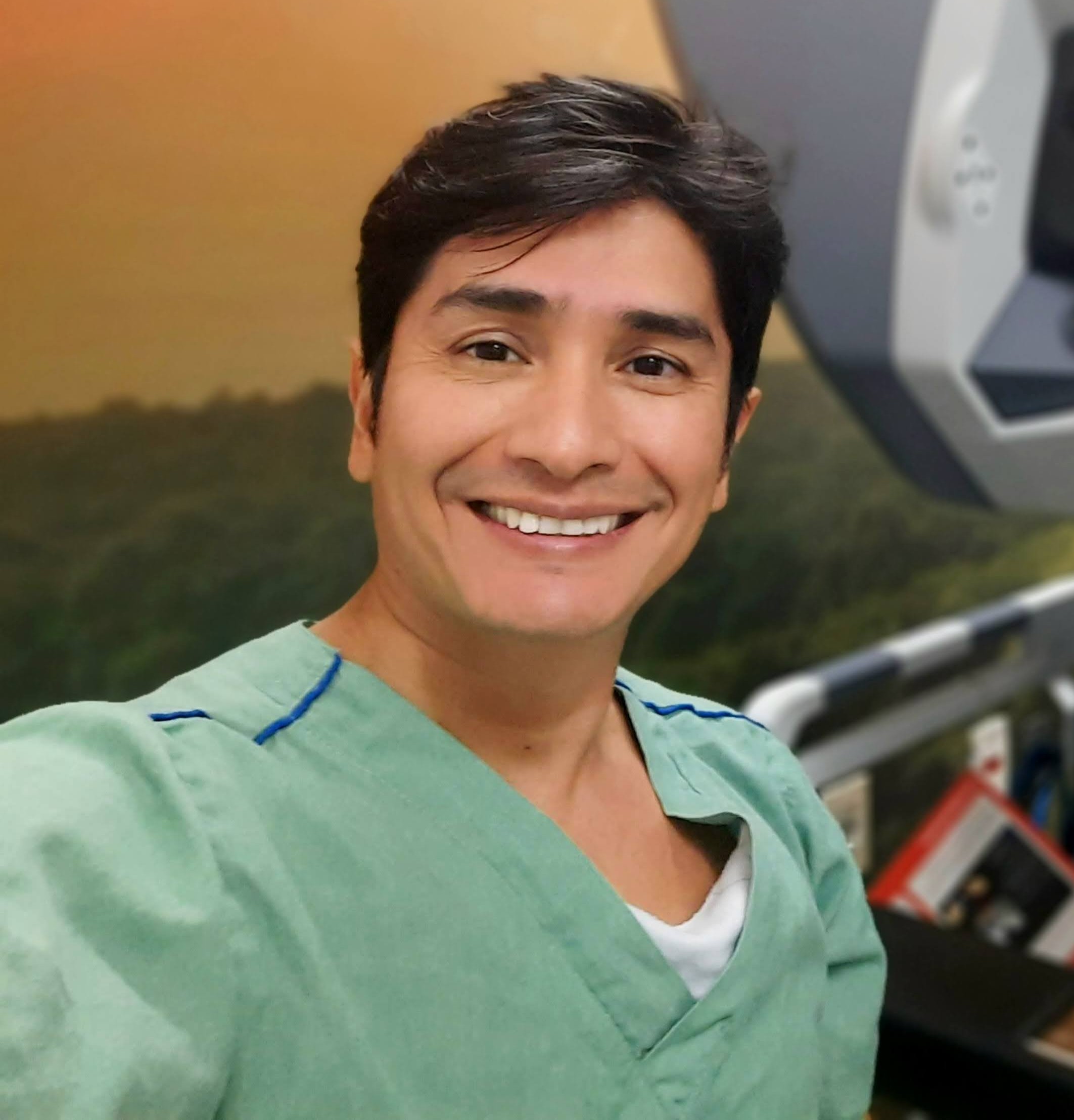
Dr. Ronald Enrique Delgado Bocanegra
Dr. Ronald Enrique Delgado Bocanegra,
Dr Ronald Delgado – Endometriosis Specialist
Summary: Dr Ronald Delgado is a dedicated endometriosis specialist based in Salvador, Brazil, known for his expertise in excision surgery and compassionate care. Rooted in the embryonic theory of endometriosis, Dr Ronald Delgado believes the condition is congenital, not caused by retrograde menstruation. This understanding shapes his focus on complete, fertility-preserving excision as a long-term solution. Dr Ronald Delgado prioritizes individualized care, using medication selectively to manage symptoms before or after surgery when necessary. For patients experiencing persistent pain, he takes a holistic and multidisciplinary approach, evaluating for residual disease and coexisting conditions like pelvic floor dysfunction or IBS. His patient-first philosophy ensures every woman receives thoughtful, evidence-based care tailored to her needs. With a reputation for meticulous surgical technique and compassionate follow-up, Dr. Ronald Delgado offers hope and healing to patients navigating the challenges of endometriosis.
City: Salvador, Bahia, Brazil
Philosophy of Endometriosis Care: My approach to the treatment of endometriosis is grounded primarily in the embryonic theory of origin, as proposed by Dr. David Redwine. According to this theory, endometriosis results from the aberrant differentiation of embryonic Müllerian remnants, which persist outside the uterine cavity and later develop into endometriotic lesions. This perspective shifts the focus away from retrograde menstruation and toward the concept that endometriosis is a congenital disease, present from birth and not caused by menstrual backflow. It explains cases in premenarchal girls, women with Müllerian anomalies, and the presence of endometriosis in distant locations that retrograde menstruation can’t account for. Clinically, this theory supports a surgical approach that emphasizes complete excision of all visible and suspected disease, rather than ablation or suppression. It also reinforces the idea that endometriosis is not a recurrent disease if completely removed — recurrence is often due to incomplete excision. Therefore, my goal is to perform meticulous, fertility-preserving excision surgery whenever possible, aiming for long-term relief and definitive treatment
What type of surgery do you perform for endometriosis: Excision
Medication: Grounded in the embryonic theory of endometriosis, I view the disease as congenital and not caused by retrograde menstruation. Therefore, my primary treatment is complete surgical excision, aiming for definitive management. Medications are used as supportive tools in two main contexts: before surgery, to manage symptoms temporarily when immediate surgery isn’t feasible. After surgery, in selected cases — like when there’s a residual microscopic disease or when fertility preservation is a priority. I typically use: Continuous combined oral contraceptives, Progestins (like dienogest) GnRH analogues with add-back therapy These options help control symptoms but don’t cure the disease. The focus remains on individualized, surgical-centered care.
Approach to Persistent Pain After Surgery: When patients experience persistent symptoms after surgery for endometriosis, my approach is comprehensive and individualized. First, I assess whether the symptoms are due to residual disease, coexisting conditions, or central sensitization. Persistent pain doesn’t always mean recurrence — it could be related to pelvic floor dysfunction, adenomyosis, irritable bowel syndrome, interstitial cystitis, or neuropathic pain. If I suspect residual or recurrent disease, I review the surgical report and imaging and may repeat diagnostic imaging with an expert. In some cases, reoperation may be necessary, especially if the initial surgery was incomplete. If other causes are identified, I work with a multidisciplinary team — including pelvic physiotherapists, pain specialists, gastroenterologists, and psychologists — to address the symptoms holistically. Medication (like progestins or neuromodulators) can also be used as part of symptom control, but not as the sole strategy. In essence, I treat persistent symptoms not with a one-size-fits-all approach, but through careful reassessment, patient education, and a multidisciplinary plan tailored to each woman’s needs.
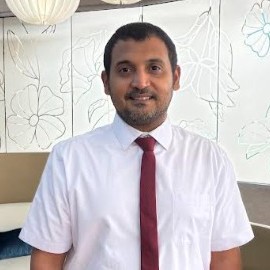
Dr. Mohammad Haekal
Dr. Mohammad Haekal
Dr Mohammad Haekal – Endometriosis Specialist
Summary: Dr Mohammad Haekal is a skilled endometriosis specialist based in Jakarta, Indonesia, known for his comprehensive approach to care. Dr Mohammad Haekal integrates the retrograde menstruation, stem cell, and epigenetic theories to understand and treat endometriosis effectively. His surgical expertise focuses on precise excision to remove endometriotic lesions completely, aiming for long-lasting relief. Dr Mohammad Haekal complements surgery with tailored medication options, including dienogest and GnRH analog injections, to manage symptoms before and after treatment. For patients experiencing persistent pain after surgery, Dr Mohammad Haekal emphasizes medical management and typically recommends only one thorough surgical intervention. His patient-centered philosophy ensures personalized treatment plans that consider each woman’s unique needs, supporting recovery and improved quality of life. With a focus on effective, evidence-based care, Dr Mohammad Haekal provides hope and support for those navigating endometriosis.
City: Jakarta, Indonesia
Philosophy of Endometriosis Care: Retrograde, stem cell, and epigenetic theories.
What type of surgery do you perform for endometriosis: Excision
Medication: Dienogest GnRH Analog injection
Approach to Persistent Pain After Surgery: Medical management first, we only perform a single, complete, comprehensive surgery.

Dr. Mamta Mamik
Dr. Mamta Mamik
Dr. Mamta Mamik – Endometriosis Specialist
Summary: Dr. Mamta Mamik is a dedicated endometriosis specialist based in New York City, known for her expertise in excision surgery and comprehensive patient care. Dr. Mamta Mamik approaches endometriosis treatment with a deep understanding of the embryonic rest theory, coelomic metaplasia, and stem cell theory, providing personalized care tailored to each patient’s needs. She typically recommends oral contraceptives and the Mirena IUD after excision surgery to help prevent recurrence, avoiding GnRH agonists unless specifically requested by the patient. Dr. Mamta Mamik believes in a multi-modality approach to managing persistent pain after surgery, working closely with physical therapists, offering nerve blocks, and considering neuromodulator implants when necessary. Her patient-centered care focuses on improving quality of life through effective pain management and ongoing support. This warm and thorough approach makes Dr. Mamta Mamik a trusted expert for those seeking relief from endometriosis symptoms.
City: New York City, New York
Philosophy of Endometriosis Care: Embryonic rest theory, coelomic metaplasia, stem cell theory
What type of surgery do you perform for endometriosis: Excision
Medication: Only oral contraceptives and Mirena IUD. I recommend their use after excision surgery to avoid recurrence. I avoid using GnRH agonists, as this makes excision difficult unless the patient really would like to try this.
Approach to Persistent Pain After Surgery: A multi-modality approach is always best. This includes collaboration with physical therapy, nerve blocks in the office, and possible neuromodulator implants depending on the severity of pain.
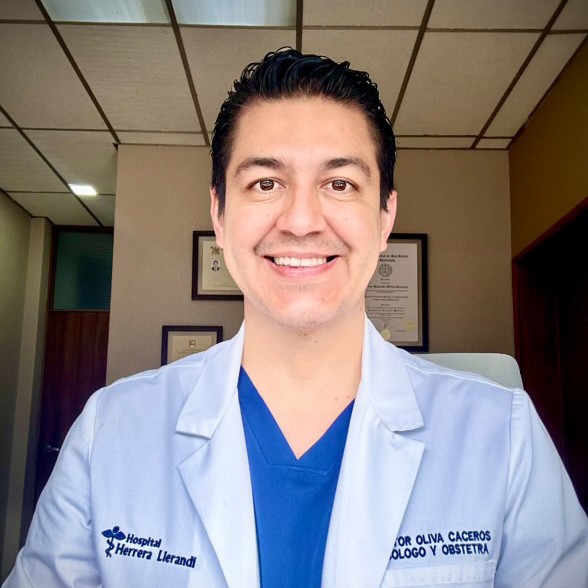
Dr. Hector Oliva
Dr. Hector Oliva
Dr Hector Oliva – Endometriosis Specialist
Summary: Dr Hector Oliva is an endometriosis specialist based in Ciudad de Guatemala, Guatemala, known for his expertise in excision surgery and personalized care. Dr Hector Oliva follows the Mullerosis Gene Ensemble Genetic Theory, offering a scientific and compassionate approach to understanding and treating endometriosis. He combines surgical precision with supportive therapies to ensure the best outcomes for his patients.
In his practice, Dr Hector Oliva emphasizes the importance of mapping disease before surgery and tailors medication plans that may include dienogest, combined oral contraceptives, NSAIDs, and antioxidant supplements. He integrates lifestyle guidance, including nutrition, physical therapy, and exercise, into every patient’s care. For persistent pain after surgery, he recommends a six-month recovery period with continued rehabilitation to evaluate results and promote healing. Patients benefit from his holistic, science-driven approach to long-term symptom relief and improved quality of life.
City: Ciudad de Guatemala, Guatemala
Philosophy of Endometriosis Care: Mullerosis Gene Ensemble Genetic
What type of surgery do you perform for endometriosis: Excision
Medication: Dienogest with little symptoms and few diseases through mapping. Before surgery, pills containing estradiol plus dienogest are used when the patient needs contraception. AINEs and antioxidant supplements. Every patient needs nutritional guidance, exercise, and physical therapy
Approach to Persistent Pain After Surgery: Perform lifestyle changes and wait 6 months after the surgery. because this is the time that we can evaluate the benefits of the surgery. Every patient continues with physical rehabilitation.

